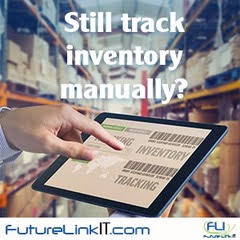 For those of you who still conduct a manual inventory of your physical assets, just the thought of the annual audit is probably enough to make you shudder.
For those of you who still conduct a manual inventory of your physical assets, just the thought of the annual audit is probably enough to make you shudder.
However, inventory remains a necessary component of business, especially in the manufacturing space. It’s critical that you understand what you have, where it’s located, and how many of each item you require for the orders coming down the pike.
But we’ve always tracked inventory manually…
Sure, change is tough. But if you’ve been a manufacturer for any length of time, you are well aware of the downsides of a manual inventory process:
- It’s a time sink.
- It allocates valuable labor spend toward administration rather than revenue-generating production.
- The chance of error increases exponentially since, well, humans are involved.
- Your data is only as good as your last inventory count. So that can lead to some nasty surprises once or twice a year, and big reconciling entries.
Here’s how to know when it’s time to move to electronic inventory instead:
Sign #1 – Inventory takes too long and involves too much of your team.
If your whole business is grinding to a halt to take care of inventory, “Houston, we have a problem.” Electronic inventory can speed the process from a painstaking several days to the span of just a few hours.
Sign #2 – When you physically count your inventory, you find numerous inaccuracies.
When your counts are off, your business is, too. You could run out of an item at the worst possible time, bringing the line to a halt at the height of your busy season. Or you could end up with a surplus of items that may have limited shelf life.
With an electronic inventory system, the data you get back is more accurate that what you’d get from manually tracked inventory transactions, where human error is impossible to avoid. Accurate inventory means you can make the right decisions for your business at the right times.
Sign #3 – You are aggregating data from multiple sites, i.e. a tracking nightmare.
The more complex your inventory – multiple production and storage facilities across state lines, for example – the more tedious and error-ridden your data potentially becomes. Gathering all the data on “like-items” takes up valuable, additional time. Additionally, inventory software can incorporate business logic and analytics that manual methods simply cannot.
Ready to make the switch? We can help you determine the best inventory management platform for your needs. Click here to schedule a call with one of our manufacturing software experts.

